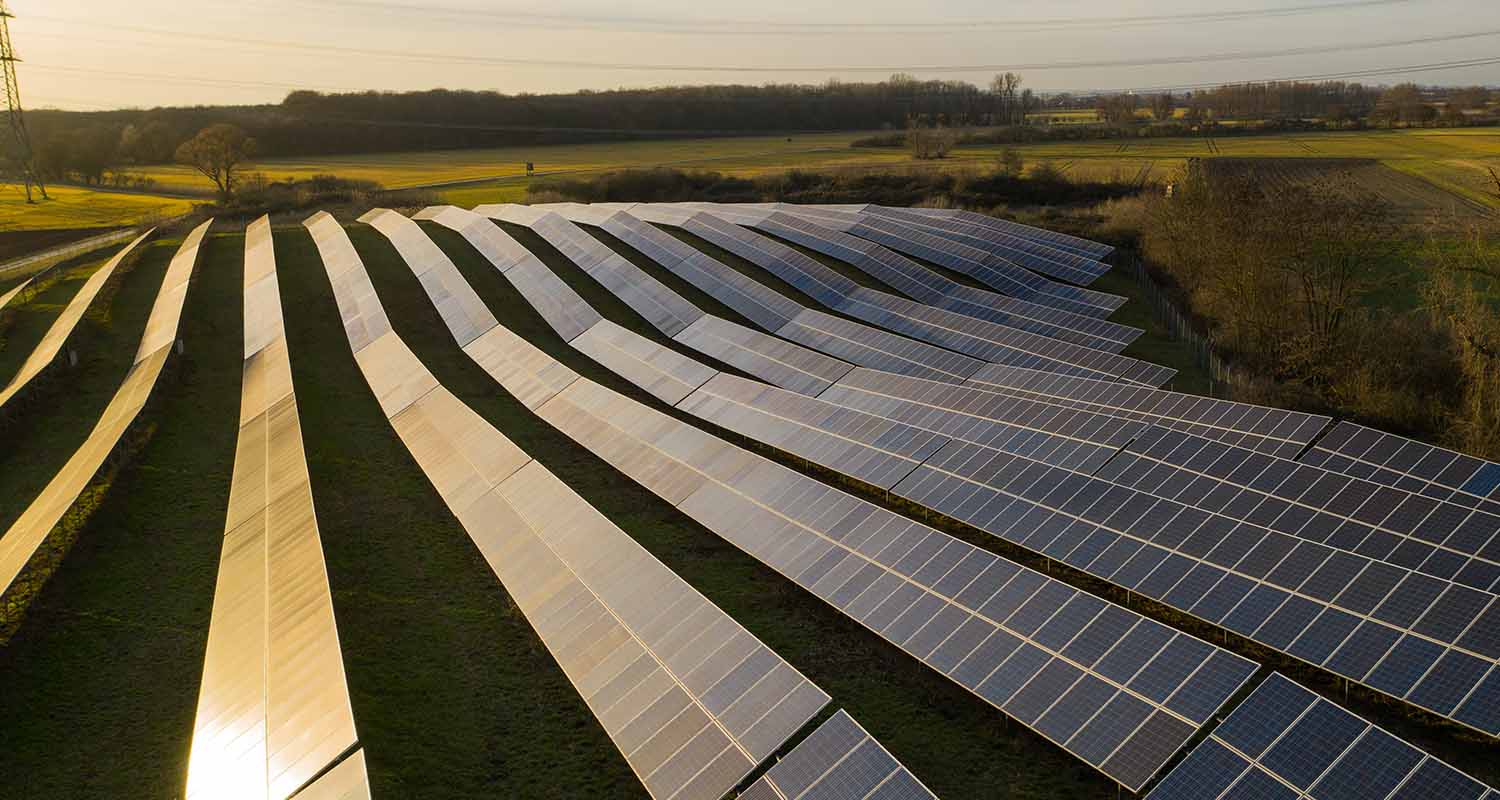Valdesolar PV solar farm
Production capacity: 264 MW
Location: Valdecaballeros, Badajoz
Startup year: 2022

What is solar energy and what are its benefits?
Making the most of the sun's energy
At a time when our responsibility to our planet and the environment is a top priority, it's important to know exactly what solar energy is, how it works, and how to expand its use as a source of electricity generation.
What is solar energy?
Solar energy is harnessed from the sun in the form of electromagnetic radiation (light, heat, and ultraviolet rays). By installing solar panels or collectors, it can be used to capture thermal energy (photothermal) or to generate electricity (photovoltaic).
Solar energy is one of the main types of renewable energy, and it plays a key role in the transition. It helps promote cleaner economies that protect the environment, improve people’s well-being, and ensure the sustainability of companies.
Technological breakthroughs have transformed solar energy into one of the most efficient and affordable in the renewable sector. This unlimited energy source, in addition to contributing to the sustainability of the planet, attracts investment, creates jobs, and increases the competitiveness of companies.
At a time when our caring for our planet and the environment is a priority, we should be aware of the different types of solar energy, how they work, and how their use can be extended as a source of electricity generation.
What are the advantages of solar energy?
Solar energy is a source of clean energy that helps to significantly reduce the carbon footprint. These are some of its benefits:
Unlimited
Solar energy is a source that's totally renewable as it comes from a long-lasting and unlimited source: the sun.
Clean
Solar energy doesn't release carbon dioxide into the atmosphere or waste therefore it's a 100% clean source.
Completely silent
It's a type of energy that doesn't produce any noise pollution as it's generation process is completely silent.
Accessible
Lastly, solar energy systems are easy to install and adapt to any place, even in geographically remote areas.
How can solar energy be used and applied?
Technological innovation in the field of renewable energies has made it possible for solar energy to be applied in multiple areas:
Repsol and solar energy
We want to be a sustainable and responsible company that meets society’s demands. That’s why we were the first energy company to commit to reaching net zero emissions by 2050. In line with these goals, we have developed several projects in the field of solar energy:
Our PV solar farms
We currently have four photovoltaic (PV) solar farms, thee in Spain and one in the US:
Valdesolar PV solar farm
Production capacity: 264 MW
Location: Valdecaballeros, Badajoz
Startup year: 2022
Sigma PV solar farm
Production capacity: 204 MW
Location: Cádiz
Startup year: 2023
Kappa PV solar farm
Production capacity: 126.6 MW
Location: Ciudad Real
Startup year: 2021
Jicarilla PV solar farm
Production capacity: 62.5 MW
Location: New Mexico, USA
Startup year: 2022
Discover the advantages of solar energy by signing up for any of our solutions